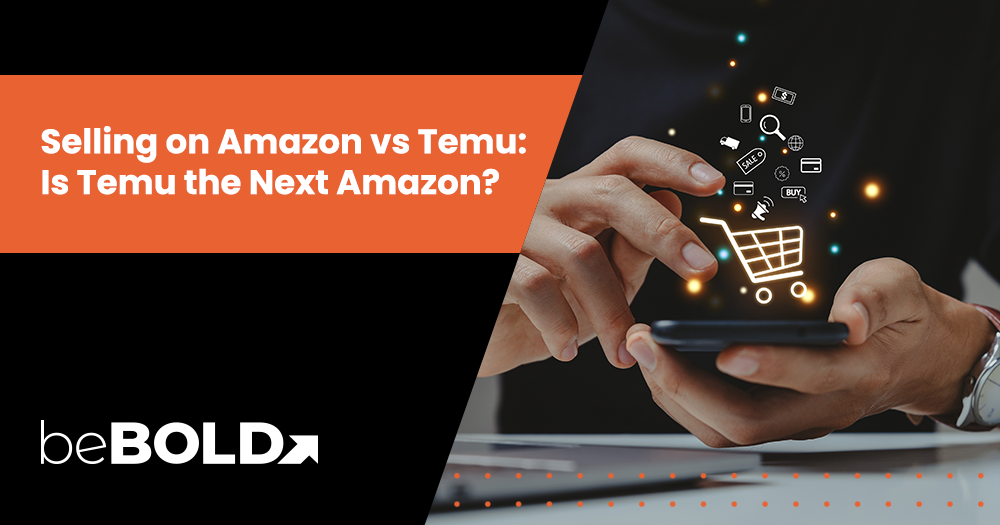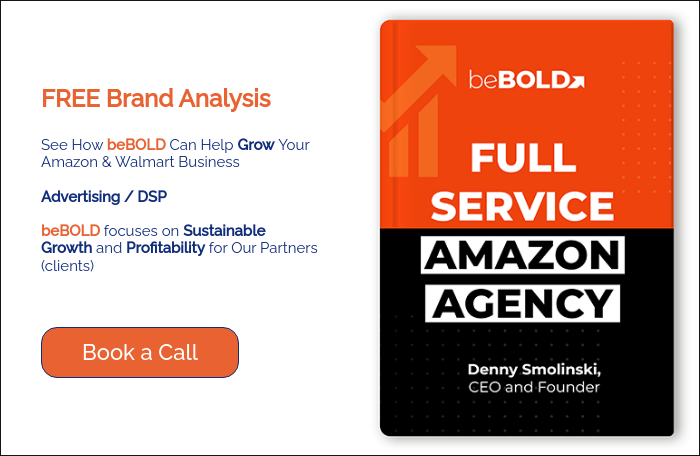As Temu’s rapid rise challenges Amazon’s position as the leading e-commerce giant, sellers are now asking: which platform offers the best potential for long-term success and profitability?

Key Summary
- Amazon is the established eCommerce powerhouse, with 310M+ active customers, unmatched Prime logistics, and strong seller tools like FBA, Brand Registry, and PPC. 🚀
- Temu, backed by Chinese giant PDD Holdings, is disrupting the e-commerce terrain with ultra-low pricing, gamified shopping, and viral TikTok marketing. It surpassed Amazon in app downloads in 2023 and is aggressively targeting younger, price-conscious consumers. 📱
- For sellers, Amazon is about brand building, scalability, and trust, while Temu is about high-volume, low-margin selling. 💼
- While Temu won’t replace Amazon, it’s reshaping consumer behavior and forcing Amazon to respond with low-cost initiatives like Amazon Haul. 🔄
Is Temu the Same as Amazon?
Not really. Amazon operates as both a retailer and a marketplace, offering Prime shipping, household-name brands, and 350M+ product listings. Sellers can build brands, run ads, and scale globally.
Temu, by contrast, is a factory-to-consumer discount marketplace, primarily connecting Chinese manufacturers directly to buyers. Branding is limited, logistics are slower, and the model thrives on bulk sales at razor-thin margins. Think of it like this: Amazon is Costco + Apple Store, while Temu is Dollar Tree + TikTok. Both sell to millions, but with entirely different philosophies.
Pros and Cons of Amazon and Temu for Sellers
What Are the Pros and Cons of Selling on Amazon?
|
Amazon Pros |
Amazon Cons |
|
Massive customer base: Over 200M Prime members willing to pay for speed and convenience. |
High fees: Referral, FBA, storage, and new inbound placement fees cut margins (often leaving sellers with ~15%). |
|
FBA (Fulfilled by Amazon): Handles storage, packing, delivery, and returns, boosting Buy Box visibility. |
Competition with Amazon itself: Private-label brands like Solimo often undercut third-party sellers. |
|
Brand-building tools: A+ Content, Stores, Brand Registry, Brand Analytics, and DSP ads. |
Buy Box race: Lowest price + fastest shipping dominate, forcing constant pricing battles. |
|
Higher trust factor: Reviews, A-to-Z Guarantee, and consistent service boost conversions. |
Counterfeit & click fraud risks: Amazon is not immune to fake reviews, counterfeiters, or PPC click fraud. |
What Are the Pros and Cons of Selling on Temu?
|
Temu Pros |
Temu Cons |
|
Low entry barrier for manufacturers and wholesalers: Sellers don’t need branding, ads, or complex storefronts. |
No brand visibility: All products are sold under Temu’s umbrella brand. |
|
Aggressive pricing & volume: Factory-direct model ensures high sales velocity. |
Strict pricing control: Temu often dictates the lowest possible pricing. |
|
Appeals to Gen Z and TikTok audiences: Gamification and group-buy discounts drive virality. |
FBM-only model: No fulfillment support like Amazon FBA; sellers must manage logistics. |
|
90-day return policy: Promotes consumer-friendly returns, attracting risk-tolerant buyers. |
Trust and quality issues: Anonymous sellers, inconsistent quality, and suspected review manipulation hurt credibility. |
What are the Key Differences Between Amazon and Temu?

Business Model & Ownership
- Amazon: Amazon is a public U.S. company that operates both as a retailer and a marketplace. It generates revenue not only from third-party sellers (who account for 60%+ of GMV) but also from its own private-label products and services like AWS, Prime, and Kindle. Importantly, Amazon balances profitability with reinvestment, consistently prioritizing logistics, customer trust, and infrastructure. Sellers benefit from strong IP protections through Amazon Brand Registry, counterfeit monitoring, and legal recourse.
- Temu: Temu is owned by PDD Holdings. It’s not a retailer, but a pure marketplace that connects Chinese manufacturers directly with end customers. Temu deliberately operates at a loss, using a “low-margin, high-volume” strategy to prioritize customer acquisition over profitability, similar to Shein.
Product Range

- Amazon: Amazon is a “one-stop shop” with 350M+ SKUs across virtually every category, including books, groceries, luxury beauty, electronics, apparel, and even services like streaming and cloud. Crucially, Amazon carries international brands like Apple, Nike, and Samsung, plus its own labels (Amazon Basics, Solimo, etc.). This makes it appealing for every type of buyer, from bargain hunters to premium shoppers.

- Temu: Temu thrives in fast fashion, home goods, accessories, and gadgets, mostly categories with quick turnover and high impulse-buy potential. Many listings are “dupes” (lookalike products resembling luxury or name brands without official branding). Temu does not typically carry established global brands, which makes it strong for trendy, unbranded items but weaker in categories like electronics or groceries.
Pricing & Fees
- Amazon: Amazon sellers face multiple fees, including referral fees (4–15%), FBA storage and fulfillment fees, inbound placement fees, and penalties for excess inventory. These costs squeeze margins, especially in competitive categories. However, Amazon justifies higher prices with trust, Prime logistics, and brand credibility. Sellers with strong positioning can still achieve profitability by leveraging premium branding and advertising.
- Temu: Temu is ultra-aggressive on pricing, often 40% cheaper than Amazon for similar items. It benefits from the U.S. “de minimis” import rule (products under $800 avoid import duties), allowing Temu to bypass tariffs Amazon sellers often face. Sellers don’t pay traditional advertising or branding costs since Temu controls listings, but they operate under strict price controls. Temu often dictates minimum prices, making profitability razor-thin.
Delivery Speed and Logistics
- Amazon: Amazon’s Prime network remains unmatched: 1–2 day delivery for most items, same-day in some metros, and advanced last-mile tracking (live maps, predictive ETAs, etc.). FBA gives sellers plug-and-play logistics plus better Buy Box eligibility. Amazon even offers SFP (Seller Fulfilled Prime), letting sellers deliver from their own warehouses with Prime perks.
- Temu: Temu relies on cross-border shipping from China through partners like Cainiao. Standard delivery averages 7–20 days, while express shipping shortens to 4–9 days (free only for orders above $129). Delivery times are inconsistent, and last-mile tracking is limited to USPS updates. This cost-saving approach enables Temu to keep prices low but at the expense of convenience.
Reach & Growth
- Amazon: With 310M+ active users worldwide and 200M Prime members, Amazon is the global eCommerce leader. Its presence spans over 50 countries, with localized marketplaces and strong infrastructure. Its dominance extends across categories, supported by massive ad spend and Prime loyalty.
- Temu: Temu exploded after its U.S. launch, making it the most downloaded shopping app that year. Its growth is driven by viral TikTok campaigns, gamification, and referral programs. However, its customer base is still primarily price-sensitive Gen Z and Millennials, rather than the broad demographic Amazon serves.
Seller Branding & Experience
- Amazon: Amazon empowers sellers with brand-building tools like A+ Content, Storefronts, Brand Posts, Brand Analytics, and DSP ads. These features allow storytelling, differentiation, and better conversions. While Amazon controls communication with buyers, sellers can still foster recognition and loyalty within the platform’s constraints.
- Temu: Sellers on Temu are invisible. Product presentation is standardized and controlled by Temu’s merchandising team. No branded storefronts, no A+ content, no customization. Buyers perceive purchases as “from Temu,” not from individual sellers. This makes Temu unattractive for brands but ideal for manufacturers who are less concerned with branding.
Trust & Quality
- Amazon: Trust is Amazon’s strongest moat. Its A-to-Z Guarantee, massive review ecosystem (avg. 50K reviews per product), and consistent fulfillment make it highly reliable. While counterfeits exist, Amazon’s stricter enforcement compared to Temu helps protect buyer trust.
- Temu: Temu suffers from quality inconsistency, anonymous sellers, and possible review manipulation. Omnisend found evidence of disappearing reviews and products being re-listed with inflated ratings. Buyers see Temu as fun and cheap, but not always trustworthy for essentials or premium purchases. This limits repeat purchase rates compared to Amazon.
Strategic Fit for Sellers
- Amazon: Best for brands, resellers, and entrepreneurs looking to scale globally and build credibility. It supports both small sellers and global enterprises, offering infrastructure for long-term brand growth. Sellers who want to invest in IP protection, advertising, and logistics can thrive.
- Temu: Best for manufacturers and wholesalers with high-volume, low-cost products. Temu allows these sellers to offload inventory without worrying about branding or ads. However, margins are tight, and loyalty is nonexistent. Temu is not a sustainable growth platform, but it can be useful for volume clearing and fast-fashion manufacturers.
Selling on Amazon vs Temu
Selling on Amazon is an investment in long-term brand equity and scale. You compete in a crowded market, but gain access to the world’s most trusted customer base and advanced ad ecosystem. Selling on Temu is about short-term volume. Manufacturers can offload inventory without building a brand, but they must accept paper-thin margins and a lack of control.
For sellers seeking sustainability, profitability, and global presence, Amazon is the better bet. For those seeking speed, volume, and quick cash flow, Temu is the shortcut.
|
How to Sell on Amazon |
How to Sell on Temu |
|
|
Partner with beBOLD Digital
At beBOLD Digital, we specialize in helping brands succeed on Amazon through SEO-driven listing optimization, PPC campaigns, Brand Registry support, and A+ content design.
As platforms like Temu reshape the eCommerce landscape, beBOLD Digital ensures that your brand is positioned for long-term growth rather than just short-term sales spikes.
Are you ready to grow profitably on Amazon? Book your free consultation with beBOLD Digital today!
Ready to grow profitably on Amazon? Book your free consultation with beBOLD Digital today.
Why Are Sellers Comparing Amazon and Temu Now?
For decades, Amazon has dominated through speed, convenience, and reliability. With its Prime program, Amazon created new standards for delivery, and its brand-building tools made it the default platform for sellers worldwide.
But in 2022, Temu entered the U.S. market, and within just months, it became the most downloaded shopping app, fueled by factory-direct pricing, social sharing incentives, and aggressive ad campaigns. By 2023, Temu downloads surpassed Amazon, signaling that a new competitor had arrived.
Amazon, aware of this shift, launched Amazon Haul in 2024, a mobile-only storefront dedicated to products under $20 shipped directly from China. This move shows Amazon is adapting to meet the demands of price-sensitive, mobile-first shoppers who might otherwise choose Temu.
Today, the question for sellers is no longer “Which platform is bigger?” but rather: “Which platform is right for my business strategy?”
FAQs
Is the Temu app safe?
Yes, Temu is a legitimate platform backed by PDD Holdings. However, users should be aware of concerns regarding data privacy, inconsistent product quality, and the potential for manipulated reviews.
Is Temu the same thing as Wish?
While they are similar in concept, Temu is growing at a faster pace, largely due to TikTok-style marketing tactics and strong connections with Chinese manufacturers.
Does Temu have better quality than Amazon?
No, while Temu may have lower prices, Amazon is known for its superior quality control, authenticity, and customer service.
Is Temu part of Amazon?
No, Temu is owned by PDD Holdings and is not linked to Amazon in any way.
Is Temu a threat to Amazon?
Not really. Temu poses more of a challenge to platforms like Shein and AliExpress. Although Temu has built a loyal customer base, Amazon continues to dominate with its logistics, Prime membership benefits, and brand trust.
Can sellers list identical products on both platforms without risk?
Yes, sellers can do this, but they need to adjust their pricing and logistics accordingly. Amazon focuses on trust and speed, while Temu aims for the lowest prices.
Is Temu’s shipping speed competitive yet?
Not just yet. Temu typically ships products within 7 to 20 days, whereas Amazon Prime offers much quicker delivery, averaging 1 to 2 days.
Which platform offers better profitability?
Amazon tends to be more profitable over time. Temu sellers often deal with slim margins because of strict price controls.
Which platform suits high-volume, low-cost strategies better?
Temu is definitely the better fit for this approach, as its model thrives on high volume and razor-thin margins.
Should sellers be worried about product quality and regulations on Temu?
Yes, they should. The platform's quality inconsistencies, lack of brand protection, and limited review monitoring can pose significant risks.










Comments